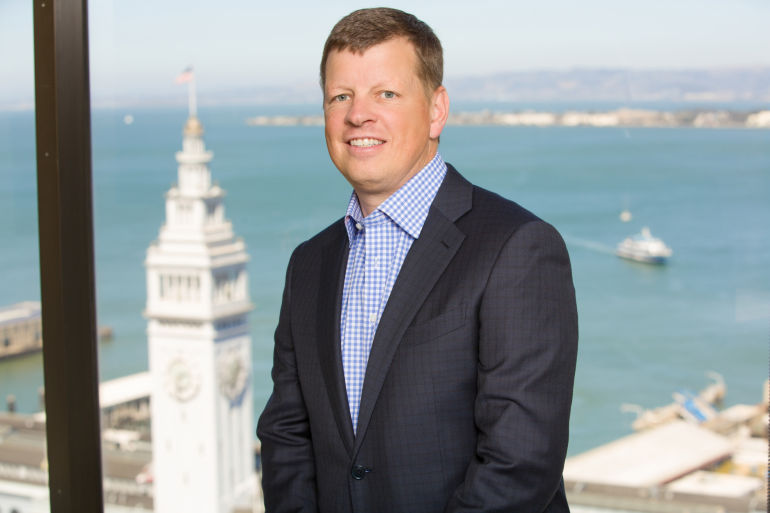
On April 26, 2024, Administrative Law Judge Julie Fitch of the California Public Utilities Commission (CPUC) issued a ruling seeking comments on the use and implementation of a centralized procurement mechanism established in Assembly Bill (AB) 1373, through which the CPUC can instruct the California Department of Water Resources (DWR) to procure electricity on behalf of all load-serving entities (LSEs) from certain eligible long lead-time generation resources, such as offshore wind (OSW), geothermal, and long-duration energy storage (Ruling).1 This centralized procurement mechanism could play a critical role in the development of a variety of long lead-time resources, and in particular, stimulate the growth of California’s nascent OSW industry by providing market assurance to developers while sparing LSEs of much of the uncertainty surrounding emerging generation technologies and procurement risk associated with capital-intensive, long lead-time projects. Comments in response to the Ruling’s 31 specific questions are due no later than May 24, 2024.
Background
In October 2023, California enacted AB 1373 with a goal of catalyzing the deployment of certain long lead-time generation resources, including OSW and geothermal energy, which can be challenging for LSEs to procure through traditional power procurement processes and timelines.2 To address this challenge, the law has created a centralized procurement mechanism through which the CPUC may instruct DWR to purchase power from eligible generation resources then distribute the procured power (and its costs) to LSEs and eligible electric customers.
The centralized procurement mechanism functions as follows. First, the CPUC must review the integrated resource plans submitted by each LSE in accordance with the CPUC’s 2022-2023 integrated resource planning process to determine if, in the aggregate, the LSEs have procured sufficient generation resource capacity to comply with the state’s 2023 Preferred System Plan (PSP) portfolio.3As discussed in a prior Wilson Sonsini Client Alert, the PSP portfolio establishes procurement targets for each category of renewable energy generation resources required to achieve the state’s legislative mandate of achieving 90 percent clean electricity by 2035 and 100 percent clean electricity by 2045. The 2023 PSP portfolio would require the state to deploy approximately 57 gigawatts (GW) of new renewable resources between now and 2035, including, but not limited to i) 4.5 GW of OSW, ii) 2 GW of geothermal, iii) 0.5 GW of long-duration storage, and iv) 7.1 GW of out-of-state wind.4 Second, if the CPUC makes an initial need determination that the LSEs have not procured sufficient eligible long lead-time resource capacity to meet the statewide procurement targets, the CPUC can instruct DWR to use the centralized procurement mechanism to purchase additional capacity from generation resources of the applicable resource category.5 Third, DWR then will perform competitive solicitations and execute one or more long-term power purchase agreements for the purchase of power from eligible resources so long as such power purchase agreements are executed and approved by the CPUC prior to January 1, 2035.6 Finally, the costs of procurement under a DWR power purchase agreement will be recovered through a charge to be shared among LSE ratepayers.7 Though AB 1373 requires that the costs and benefits associated with procurement of these resources be allocated among LSEs and ratepayers, the mechanism that will be used to effectuate this allocation has yet to be determined.8
No later than September 1, 2024, the CPUC is required to make an initial need determination for procurement of eligible resource categories by DWR.9 If such a need is determined in order to meet the state procurement targets in the PSP portfolio, the CPUC may then make a request to DWR to exercise the centralized procurement mechanism to purchase power from one or more generation resource categories within six months of the determination.10
Request for Comments
The Ruling is the first of a multistep regulatory process implementing the centralized procurement mechanism prior to the September deadline. The primary purpose of the Ruling is to seek comments from interested parties regarding the initial need determination.11 Consequently, the CPUC ALJ has requested comments on 31 questions broken into five categories, which can be generally summarized as follows:
- Eligible Resources: The CPUC seeks feedback regarding the proposed criteria for determining whether a resource should be procured via the centralized procurement mechanism, the proposed list of resource types, specific criteria for hydroelectric facilities, and opportunities for leveraging federal incentive opportunities for financing the development of long-lead time resources.12
- Need Determination: The CPUC requests comments regarding the cost-benefit analysis it conducted for a need determination, what resource types and amounts should be included in the initial need determination, and other criteria that should be considered in the need determination.13
- Relationship to LSE Procurement: The CPUC solicits input regarding the relationship between traditional LSE procurement and centralized procurement, whether LSEs should be permitted to opt out of centralized procurement, how often need determinations should be made by the CPUC, how other costs related to procurement should be addressed, and how the CPUC can encourage parties to provide candid feedback about timing and pricing considerations for development of long lead-time resources.14
- Allocation of Costs and Benefits: The CPUC invites feedback regarding the preferred cost allocation methodology for centrally procured resources and how benefits associated with centrally procured resources beyond energy and capacity should be allocated among LSEs.15
- Procedure Process and Timeline: The CPUC requests input regarding the proposed timeline and activities description for initial solicitation activities and the optimal contract structure for DWR’s power purchase agreement.16
Key Implications for OSW Development
In addition, the Ruling includes an analysis performed by CPUC Staff (Staff) to determine 1) which resource categories are eligible for the centralized procurement mechanism, and 2) whether the CPUC should make an initial need determination for the eligible resource categories. While the Staff analysis is not binding, the initial findings suggest that the CPUC is strongly considering making an initial need determination for OSW.
First, Staff identified four long-lead time resource categories that are eligible for centralized procurement which may not meet the procurement targets within the PSP portfolio: i) OSW, ii) geothermal, iii) long-duration energy storage, and iv) out-of-state wind.17 Staff then performed a qualitative analysis for each of the four resource categories to evaluate whether it would be appropriate to make an initial need determination. As part of this analysis, Staff considered whether including each resource category in the centralized procurement mechanism would 1) reduce procurement barriers for existing generation technologies, such as when LSEs are unable or unwilling to procure the resource on an individual basis or at the scale required because of the size and/or risk profile associated with the technology, or 2) facilitate “market transformation” for emerging generation technologies, in circumstances where the first round of procurement lays the groundwork for future cost reductions through economies of scale or shared learning of best practices.18
Of the four resource categories considered, Staff’s analysis suggests that OSW could be a particularly compelling choice for centralized procurement. Staff identified procurement challenges with OSW, due to the fact that i) OSW projects tend to be relatively large in size, especially when compared to the relatively low procurement targets for OSW reported by LSEs in their individual integrated resource plans, and ii) the risk associated with OSW procurement may exceed an LSE’s acceptable threshold due to uncertainty with many aspects of the OSW development process, a general lack of installed offshore transmission infrastructure, and insufficient port development.19 As further evidence of these procurement challenges, Staff noted that no California LSE has procured any OSW as of December 2023, despite the fact that many LSEs indicated that they planned to procure some OSW at some point in the near future based on their individual IRP filings.20 In addition, Staff concluded that centralized procurement could facilitate market transformation and “pave the way” for OSW development by ensuring that OSW generation technology is “available/viable” and has the potential to lead to meaningful cost reductions due to economies of scale and shared learning.21
Of the four resource categories considered, OSW was the only category for which Staff explicitly found that participation in centralized procurement could both reduce procurement barriers and facilitate market transformation. Although Staff were able to identify positive characteristics associated with the other three generation resource categories, Staff conceded that each have features or limitations that may be incompatible with centralized procurement.22 For example, Staff found that geothermal may not face the same procurement barriers because some LSEs have already begun to procure it and there is already a backstop procurement mechanism in place via the three major investor-owned utilities for geothermal resources pursuant to the CPUC’s mid-term reliability procurement orders.23 Therefore, while further analysis will need to be conducted before the CPUC can make an initial need determination, the Ruling suggests that OSW is a top contender for centralized procurement. It is still possible that the CPUC may make an initial need determination for geothermal, long-duration energy storage, and/or out-of-state wind; however, given the Staff’s less favorable view of these resource categories, such resources may prove to be less of a priority in the CPUC’s September determination.
Centralized procurement has the potential to dramatically change the prospects for the OSW industry in California by providing market assurances to OSW developers and their financiers, while also sending a clear market signal that OSW is a viable, scalable, long-term generation resource worthy of procurement by LSEs. We encourage all parties interested in deployment of long-lead time resources to continue to monitor the CPUC’s actions in this proceeding and participate to ensure that the centralized procurement mechanism produces fair and good results for both customers and independent power producers, long-term power purchase agreements that can be financed, and projects that get built and operate.
Request for Comments
The Ruling invites interested parties to submit comments on the initial need determination generally as well as the 31 questions raised therein. Interested parties may file and serve comments in response to the ruling by no later than May 24, 2024. Reply comments are due by June 5, 2024.24
[1] https://www.law360.com/ip/articles/1827648?nl_pk=bb2d8ea5-87c4-46ec-8582-CPUC Ruling in R.20-05-003, Administrative Law Judge’s Ruling Seeking Comments on Need and Process for Centralized Procurement of Specified Long Lead-Time Resources (https://docs.cpuc.ca.gov/PublishedDocs/Efile/G000/M530/K323/530323853.PDF).
[2] AB 1373 (https://leginfo.legislature.ca.gov/faces/billNavClient.xhtml?bill_id=202320240AB1373).
[3] CPUC Ruling at 2-3. For more information on procurement targets set forth in the PSP portfolio, please see this recent Wilson Sonsini Client Alert.
[4] CPUC Decision 24-02-047, Decision Adopting 2023 Preferred System Plan and Related Matters, and Addressing Two Petitions for Modification (https://docs.cpuc.ca.gov/PublishedDocs/Published/G000/M525/K918/525918033.PDF).
[5] AB 1373, codified in Section 454.52(a)(4)(C) of the California Public Utilities Code. (https://leginfo.legislature.ca.gov/faces/billNavClient.xhtml?bill_id=202320240AB1373).
[6] AB 1373 codified in Section 454.52(a)(4)(D) of the California Public Utilities Code. (https://leginfo.legislature.ca.gov/faces/billNavClient.xhtml?bill_id=202320240AB1373).
[7] AB 1373 codified in Section 365.1(c)(2)(B) of the California Public Utilities Code. (https://leginfo.legislature.ca.gov/faces/billNavClient.xhtml?bill_id=202320240AB1373).
Contributors
- Privacy Policy
- Terms of Use
- Accessibility


